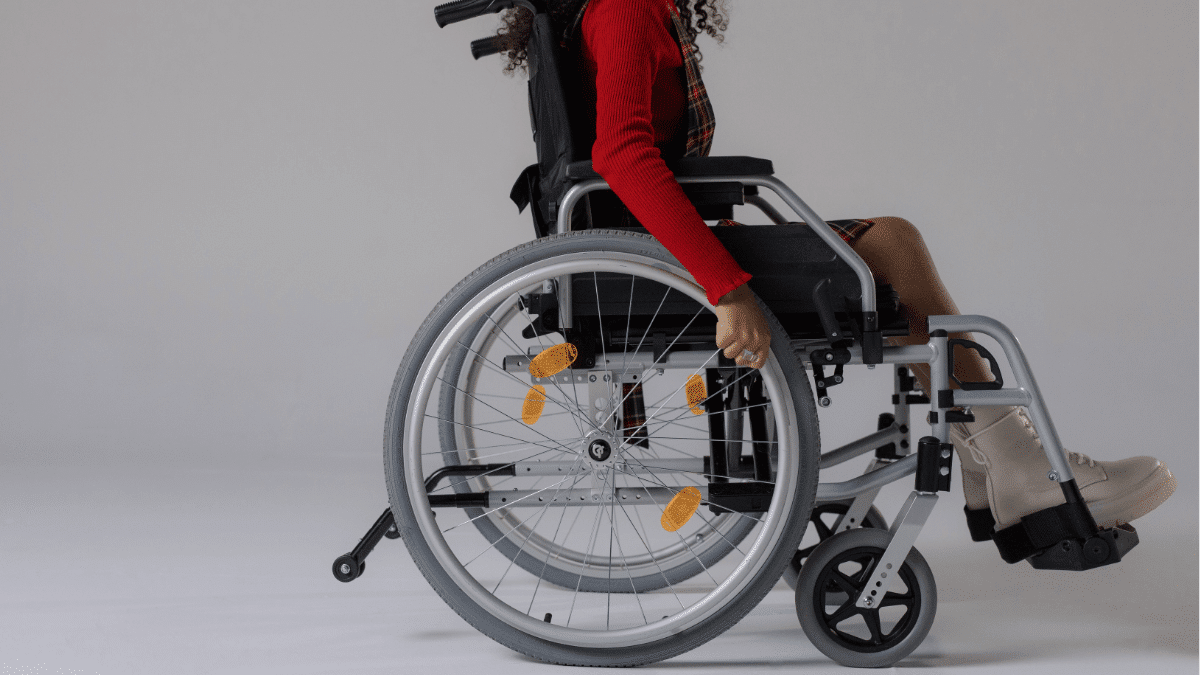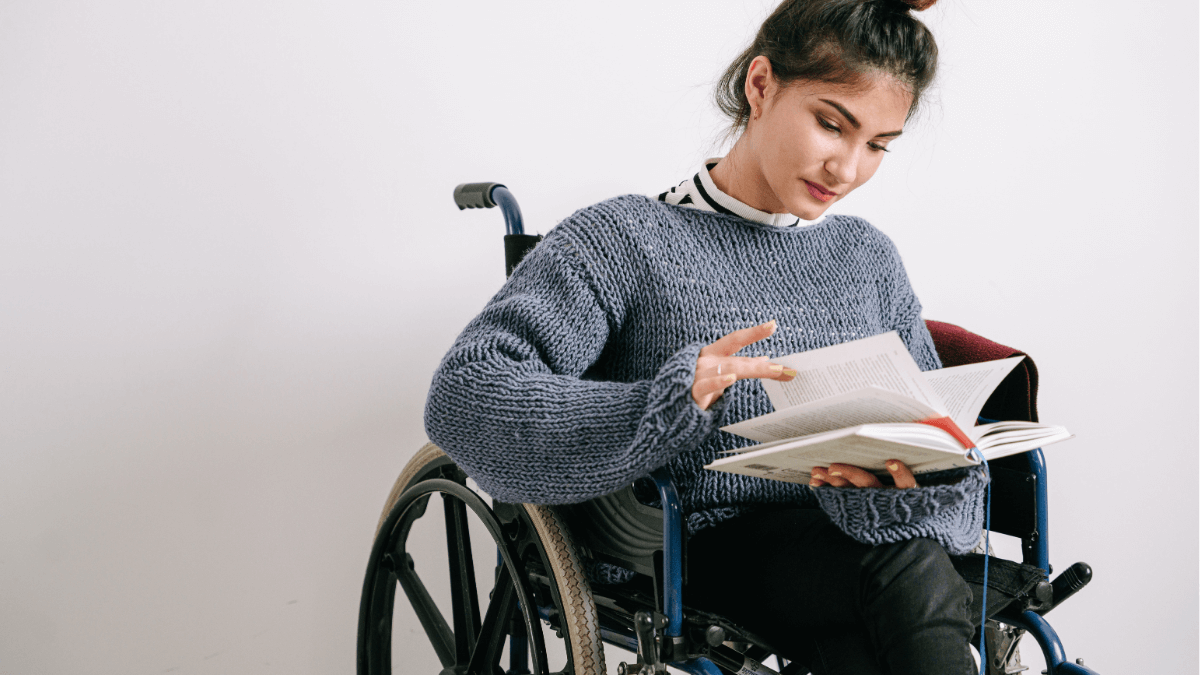Disability Benefits: How to Apply for Disability Living Allowance (DLA) for Children

The UK’s Department for Work and Pensions (DWP) offers a tax-free benefit called Disability Living Allowance (DLA) for children, which helps cover the additional expenses of caring for a child under 16 who has a disability or chronic illness.
It recognizes that parenting a child with special needs—like care, equipment, or travel—often entails higher costs.
Children’s DLA is a component of the larger Disability Benefits scheme in the UK.
Parents and carers in the UK can get a comprehensive understanding of DLA eligibility, the application process, and post-claim processes from this guide. Even if it is complicated it is easier to handle if you know the processes.
Keep in mind that Northern Ireland has its own DLA procedure (apply through Disability and Carers Service) and Scotland has Child Disability Payment (apply through Social Security Scotland).
Wales and England are the main subjects of this handbook.
Is My Child Eligible for DLA? Key Criteria Explained
Eligibility for DLA depends on several factors:
- Age: The child must be younger than 16. Anytime before to their sixteenth birthday claims may be made. They switch to Personal Independence Payment (PIP) when they turn 16.
- Disability or Health Condition Needs: Eligibility depends on the impact of the condition. The child must need substantially more care, attention, or supervision than a non-disabled peer of the same age, or have walking difficulties. This covers a wide range of conditions, including physical, learning, developmental, sensory, mental health, and behavioural issues. Clearly demonstrating this difference compared to peers, with specific examples, is crucial.
- Diagnosis Not Essential: Although it is not required a formal diagnosis is helpful. The child’s needs and the additional assistance needed determine eligibility.
- Qualifying Period (3-Month / 6-Month Rule): Generally, the needs must have existed for at least 3 months and be expected to last for at least another 6 months. This rule doesn’t apply if the child is terminally ill (expected to live 12 months or less). Special rules expedite these claims.
- Claiming for Babies and Infants (Under 3): While challenging due to the high care needs of all infants, claims can succeed if the baby needs more care, attention, or supervision than peers without a health condition, or if the type of care is different/more intensive (e.g., tube feeding, medical interventions). The care component can start from 3 months (or birth if terminally ill). Mobility components have specific age thresholds.
- Residence and Presence Tests: The child must usually live in England or Wales when claiming and have lived in Great Britain (England, Scotland, Wales) for a minimum period (varying by age: 13 weeks if under 6 months; 26 weeks in the last 156 weeks if 6 months-3 years; 26 weeks in the last 52 weeks if over 3). This time doesn’t need to be continuous. Exceptions exist (e.g., terminal illness, refugee status, Armed Forces families).
- Immigration Status: The child must not normally be ‘subject to immigration control’ (e.g., ‘No Recourse to Public Funds’ condition). Claiming DLA under such conditions could affect immigration status; seek specialist immigration advice first. British and Irish citizens are generally eligible. Rules for EU nationals can be complex; seek advice.
- Income and Savings: DLA is not means-tested. Family income, savings, or employment status do not affect eligibility.
Understanding DLA: Care and Mobility Components
DLA has two parts: the Care component and the Mobility component. A child might qualify for one or both.
Care Component:
This covers the extra help, attention, or supervision needed with personal care or safety due to the child’s condition, beyond what’s expected for their age. It considers day and night needs and has three rates:
- Lowest Rate: Need care for a ‘significant amount of the day’ (about an hour every day, maybe dispersed) in order to perform bodily functions.
- Middle Rate: Meets one of several criteria, including needing ‘frequent’ attention (several times) or ‘continual’ supervision (regularly) during the day, or ‘prolonged’ (20+ mins) or ‘repeated’ (2+ times) attention at night, or needing someone awake at night to watch over them, or needing help during dialysis.
- Highest Rate: Needs help/supervision throughout both day and night, or is terminally ill.
Understanding DWP terms is key. ‘Bodily functions’ include washing, dressing, eating, communicating, etc. ‘Attention’ is usually physical help; ‘supervision’ is watching over.
‘Substantial danger’ means a real risk of serious harm. ‘Night-time’ is when the household normally sleeps. Help must be reasonably required due to the disability. Clearly showing how needs meet these definitions and frequencies is vital.
Mobility Component:
This addresses difficulties walking outdoors or navigating unfamiliar places. It has age restrictions and two rates:
- Age Limits: Lower rate from age 5, higher rate from age 3. The DWP should automatically consider mobility eligibility as the child nears these ages if a DLA claim is already active, but proactive contact is wise.
- Lower Rate (from age 5): Can walk but needs ‘guidance’ (leading/directing) or ‘supervision’ (watching over) outdoors on unfamiliar routes, substantially more than same-aged peers. This includes children whose behaviour makes walking unsafe without close supervision.
- Higher Rate (from age 3): Meets strict criteria: unable to walk; ‘virtually unable to walk’ (considering distance, speed, manner, discomfort); walking poses danger to life/health; severe visual impairment/blind; deafblind needing assistance outdoors; severe mental impairment with severe behavioural problems (specific conditions apply).
Because of the different age thresholds, a child may receive the care component before the mobility component.
DLA Rates (2025/26 – Check GOV.UK for Current Rates)
DLA amounts depend on the component(s) and rate(s) awarded. Rates are usually reviewed annually. Always verify current rates on GOV.UK.
Source: GOV.UK, corroborated by other sources
Payments are usually made every four weeks into a nominated bank, building society, or credit union account.
Starting Your DLA Claim: A Step-by-Step Guide
Initiating a claim involves several steps:
- Who Can Claim: The primary caregiver (parent, guardian, foster carer etc.) for the child. The age requirements for claimants must be met (parents must be 16+ others must be 18+)
- Obtaining the Claim Form (DLA1 Child):
- Phone the DLA Helpline (Recommended): Call 0800 121 4600 (Textphone: 0800 121 4523; Relay UK: 18001 then 0800 121 4600; BSL video relay available via GOV.UK) to request a posted form. Ask for alternative formats (large print, braille) if needed.
- Download and Print: Search “DLA child claim form” on GOV.UK.
- Why Phoning is Often Better: Phoning usually backdates the claim start date to the call date (if the form is returned within ~6 weeks). Downloading means the claim starts only when the DWP receives the form. Phoning can secure several weeks of missed payments.
- Return Deadline: Typically 6 weeks from the phone request. Meet this deadline to secure the earlier start date. Use the provided envelope. If waiting for evidence, send the form back on time noting evidence will follow.
- Northern Ireland Process: Contact Disability and Carers Service (0800 587 0912) or download from NI Direct website.
- Claims Under Special Rules (Terminal Illness): Call the DLA helpline (0800 121 4600), state claiming under special rules. Requires an SR1 form from a medical professional confirming prognosis.
Also Read: Top 5 Benefits for Low-Income Households in the UK
Filling in the DLA Form: Providing the Right Information
Since choices mainly depend on the form and supporting documentation, accurate and comprehensive completion is essential. It can be tough and is somewhat long.
- Detail is Essential: Give thorough information on the illness, the assistance required, and how this varies from peers. The decision-makers will not meet the child and are not specialists. If necessary, use additional sheets. Don’t presume to know.
- Explain, Don’t Just Tick: Use free-text boxes to elaborate on answers with concrete examples. Explain how the condition affects the child and why help is needed.
- Focus on Difficulties: Concentrate on challenges and extra support required due to the disability.
- Compare to Peers: Crucially, demonstrate how care/supervision/mobility needs are greater than or different from same-aged peers throughout the application.
- Use a Diary: It is strongly advised to keep a journal for at least a week in advance in order to document daily care specifics, the frequency and duration of assistance and changes (‘better’ and ‘poor’ days). Fill out the form with this information.
- Address Fluctuating Conditions: Describe needs on ‘bad’ and ‘better’ days (avoid ‘good’/’normal’). Explain frequency and focus on needs ‘most of the time’ (over 50%).
- Be Specific: For each need, explain: What help? Why needed? When needed? How long does it take?
- Explain Consequences: Describe what happens if help isn’t provided.
- Consult Official Guidance: Use the DWP information booklet accompanying the form for notes on specific questions.
- The Professional’s Statement: A section for a professional (doctor, teacher, therapist etc.) who knows the child well.
- Choose wisely: Select someone relevant to the child’s main needs.
- Brief them: Explain Disability Living Allowance criteria (extra needs vs peers) and discuss the child’s specific help requirements beforehand.
- Focus: Ensure they focus on difficulties and extra support, not just positive progress. School reports often lack sufficient detail.
- Review: Check the statement before submission. If inaccurate or unhelpful, discuss amendments or consider omitting it.
- Seek Assistance: Get help from Citizens Advice, Contact, Scope, or other charities if needed.
- Keep a Copy: Always copy the completed form and all evidence before sending.
Gathering Strong Supporting Evidence
Supporting evidence corroborates your claim and gives the decision-maker a full picture.
- Types of Useful Evidence (Send Copies Only):
- Medical reports (GP, consultants, therapists).
- Educational documents (EHC Plans, SEN statements, educational psychologist reports).
- Therapy reports.
- Social care documents (assessments, care plans).
- Relevant hospital letters (e.g., discharge summaries).
- Current prescription lists.
- Relevant test results (audiology, etc.).
- Certificate of Visual Impairment (if applicable).
- Evidence to Avoid: Routine appointment letters, general condition leaflets, future appointment info, travel tickets, diaries (unless specifically requested/used as evidence), electronic media (CDs/USBs).
- Relevance and Currency: Evidence should be up-to-date and directly relevant to DLA criteria (extra care/mobility needs vs peers).
- Submitting Evidence: Include copies with the form. If waiting for documents, send the form on time, noting evidence will follow with an estimated date.
- Record Keeping: Keep copies of all submitted evidence. Use signed-for delivery for proof of posting.
A mix of evidence from health, education, and social care provides a holistic view.
After You’ve Applied: What to Expect
After submission, the DWP assesses the claim.
- Acknowledgement: Within two to three weeks, you should receive a mail or text confirming receipt. If not received call the helpline.
- Decision Timeframe: Typically 8-12 weeks, but can vary.
- Assessment Process: Usually decided based on the form and evidence. Face-to-face assessments are rare for children. The DWP may contact professionals for more info.
- The Decision Letter: States if DLA is awarded/refused, the component(s) and rate(s), reasons, award duration (fixed-term/indefinite), and appeal information.
- Award Duration: Can be fixed-term (e.g., 2-5 years) or indefinite. For fixed terms, DWP should contact you before expiry for renewal, but stay aware of the end date.
- First Payment: If successful, the letter indicates the first payment date. Payments are usually 4-weekly, backdated to the claim start date (call date or form receipt date).
Also Read: Explained: How to Apply for Student Grants and Scholarships in the UK
Managing Your Disability Living Allowance Award
Ongoing management involves reporting changes and preparing for age 16.
- Reporting Changes in Circumstances: Legally required to promptly inform DWP (via helpline/Disability Service Centre) of changes affecting entitlement.
- Report: Significant changes in condition/needs (better or worse), personal details (address), hospital/care home admissions (may affect payment after 28 days in care home), going abroad (payment may stop after 13 weeks, longer for medical treatment), detention, immigration status changes, terminal illness diagnosis.
- Consequences: Failure can lead to overpayments (must be repaid), penalties, or legal action. Reporting deterioration promptly might lead to backdated increases.
- The Transition at Age 16: DLA stops at 16. The young person must claim Personal Independence Payment (PIP).
- Invitation: DWP usually writes before the 16th birthday inviting a PIP claim.
- New Claim: PIP requires a new form, different criteria (daily living/mobility activities, points system), and often a health assessment.
- Potential Change: No guarantee of qualifying for PIP or at the same level due to different criteria. Preparation is key.
Conclusion
When a child applies for Disability Living Allowance, it must be shown that they require more care, supervision, or mobility than their peers.
Important actions include determining eligibility, acquiring and carefully filling out the form (for backdating it is recommended to call first) and assembling solid proof.
A crucial component of the UK’s Disability Benefits system DLA is a non-means-tested benefit that provides essential financial assistance.
A successful claim can also unlock other crucial support. Utilise official GOV.UK information and seek advice from organisations like Citizens Advice, Contact (Helpline: 0808 808 3555), or Scope.
Persistence and thorough preparation are crucial. The DLA helpline is 0800 121 4600.







